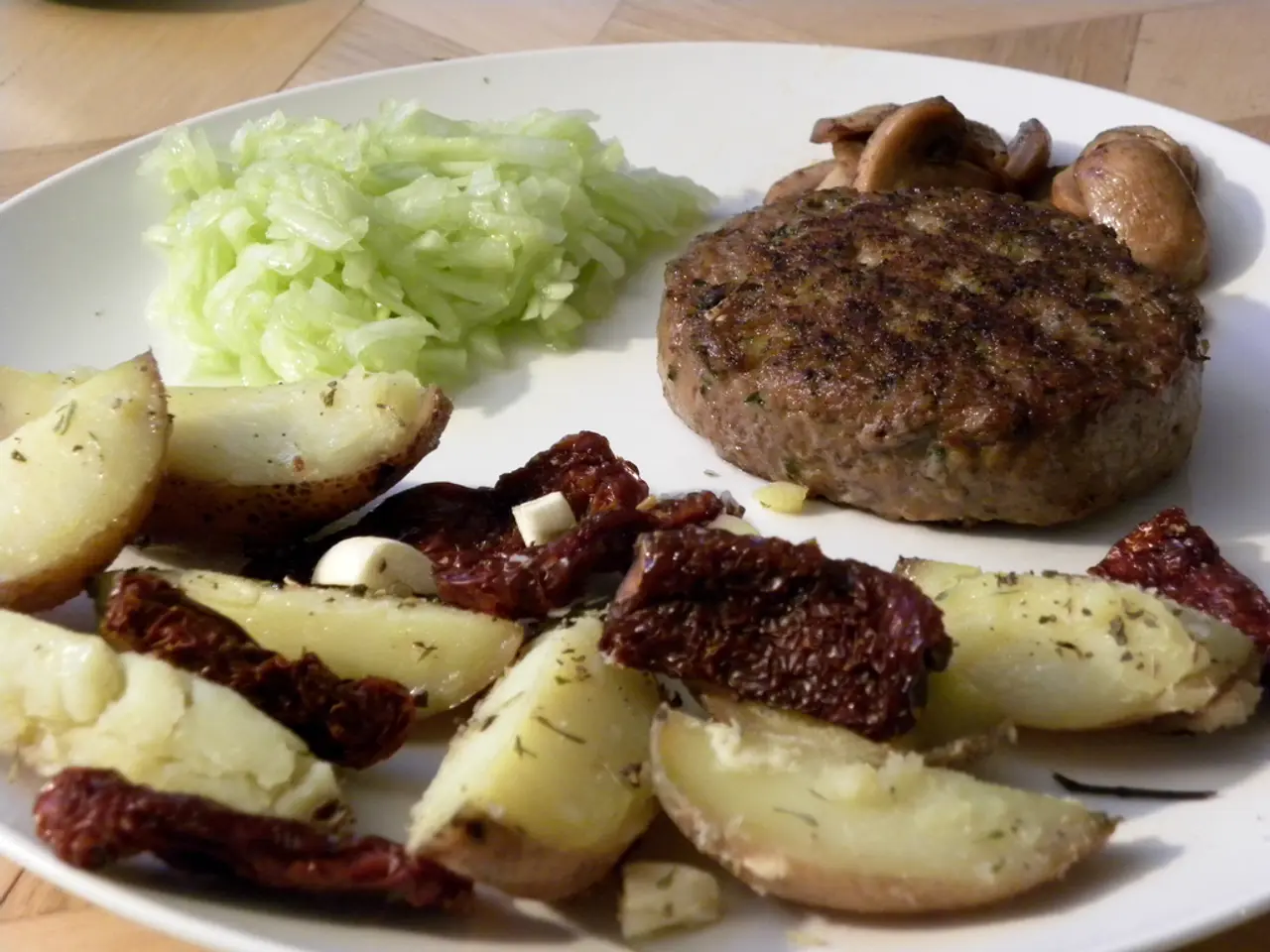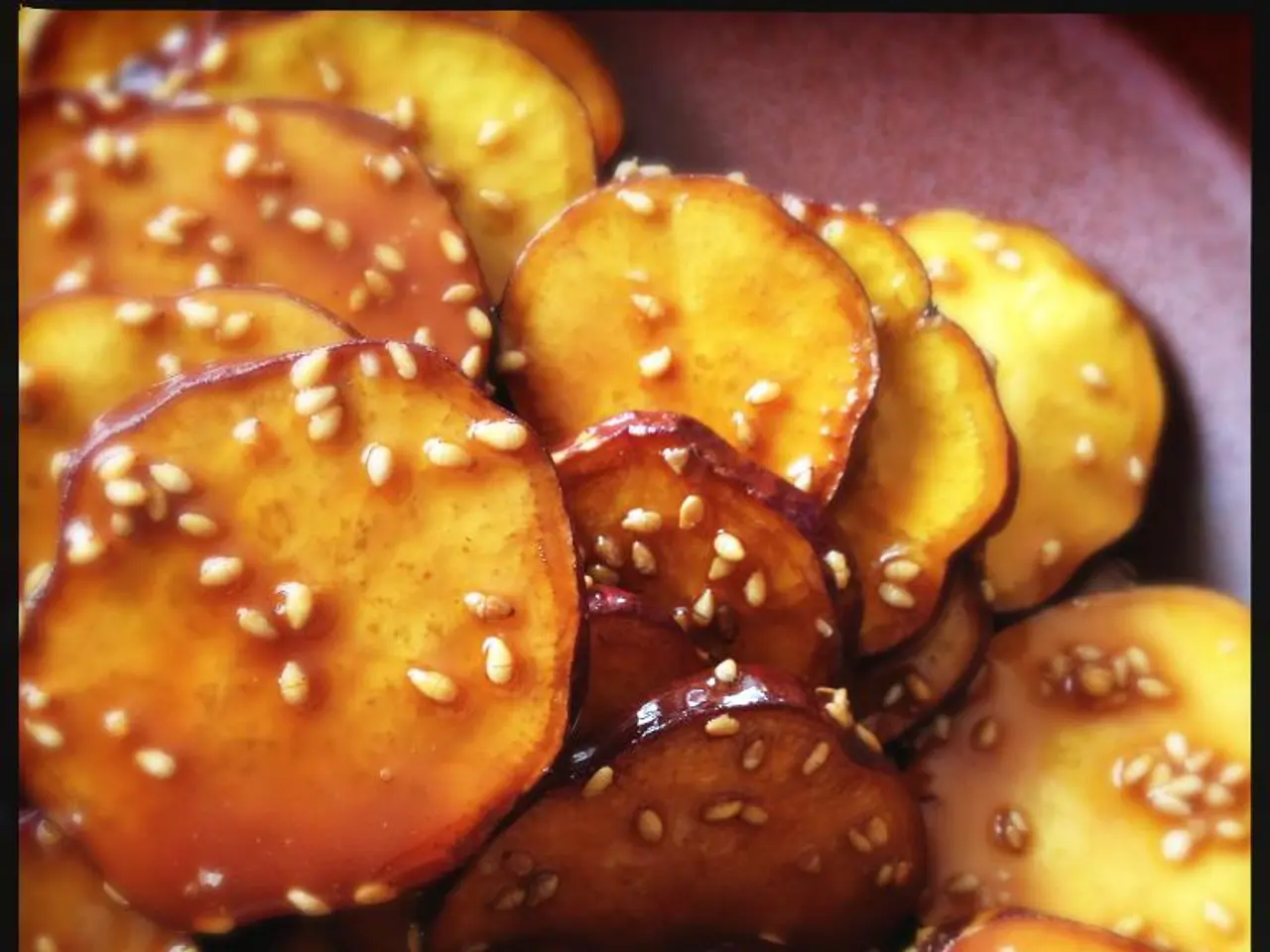Discarding not an option: explore the perks of camotte peel, a culinary delight hidden in peels
Discover the hidden gems in your kitchen with sweet potato skins! Rich in fiber, vitamins, and minerals, these often-overlooked parts of the sweet potato can significantly boost the nutritional value of your meals while reducing food waste.
Sweet potatoes are a powerhouse of essential nutrients. They are packed with vitamin C, which strengthens the immune system and aids in iron absorption, as well as vitamin E, which protects cells from oxidative damage. Additionally, they provide folate, an essential nutrient for the formation of new cells and the prevention of certain congenital defects.
But did you know that the skin of a baked sweet potato can contain up to 5 grams of fiber, essential for digestion, cholesterol control, and intestinal regularity? And a large piece of baked sweet potato with its skin can provide up to 20,700 micrograms of beta-carotene, a significant portion of the recommended daily intake.
The sweet potato, a member of the convolvulaceae family, specifically the genus Ipomoea and species batatas, occupies the seventh place among the most important food crops worldwide. Originally from America, it is rich in complex carbohydrates, providing sustained energy release and ideal for those seeking prolonged satiety without blood sugar spikes.
Preparing sweet potato skins is a breeze. Here are five innovative ways to incorporate them into your cooking:
1. **Roasted Sweet Potato Skins** Preheat your oven to 400°F (200°C). Scrub the sweet potatoes clean, cut them in half lengthwise, and scoop out the flesh for use in other recipes. Place the skins on a baking sheet lined with parchment paper, drizzle with olive oil, sprinkle with salt, and add any desired seasonings (e.g., paprika, garlic powder). Roast in the oven for about 20-25 minutes, or until crispy. Enjoy as a crispy snack or use as a topping for salads or bowls.
2. **Stuffed Sweet Potato Skins** Take 1 large or 2 small sweet potatoes, cut them in half, and coat with olive oil, paprika, and salt. Bake in the oven until tender. Use the baked skins as vessels for your favorite fillings (e.g., black beans, roasted vegetables, vegan cheese).
3. **Spiralized Sweet Potato Skins (optional)** While sweet potato skins are not typically spiralized, you can use the entire sweet potato with the skin for a nutritious and visually appealing side dish by spiralizing them into "noodles" and then sautéing them.
4. **Mashed Sweet Potatoes with Skins** For a creamy mash, use the entire sweet potato, including the skin. Simply bake the sweet potatoes with skins until tender, then mash with oat milk, olive oil, cayenne pepper, salt, and nutritional yeast (optional).
5. **Breakfast Bowl with Sweet Potato** Use the skin in a breakfast bowl recipe like the one from Forks Over Knives. Simply bake or steam the sweet potatoes whole, then mash the flesh and top with your favorite fruits and nuts. The skin can be used elsewhere or blended into the mash for extra nutrition.
By incorporating sweet potato skins into your recipes, you not only reduce waste but also enhance the nutritional content of your meals. So why not give these recipes a try and reap the benefits of this nutritious and versatile ingredient?
- Sweet potato skins provide a significant amount of fiber essential for digestion, cholesterol control, and intestinal regularity, making them a valuable addition to any healthy diet.
- Recycling sweet potato skins in your kitchen can boost the nutritional value of your meals, as they are rich in essential nutrients like vitamin C, vitamin E, and beta-carotene.
- Adopting a sweet potato skin-oriented lifestyle can have positive effects on your overall health, particularly in terms of prolonged satiety, sustained energy release, and immune system strengthening.
- Cooking with sweet potato skins is both convenient and innovative, with various methods such as roasting, stuffing, spiralizing, and mashing available for incorporating them into your favorite recipes.
- Sweet potato skins in recipes are not just beneficial for health but also for the environment, as they help reduce food waste from the often-overlooked edible parts of the sweet potato.




